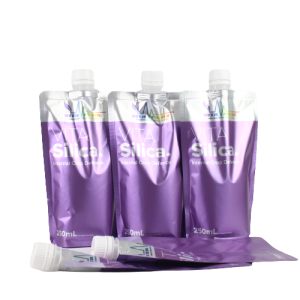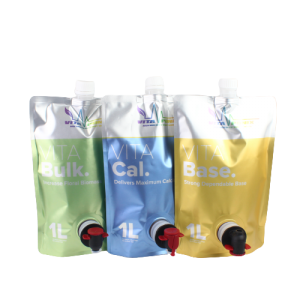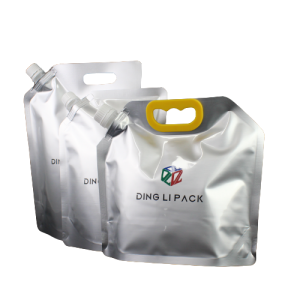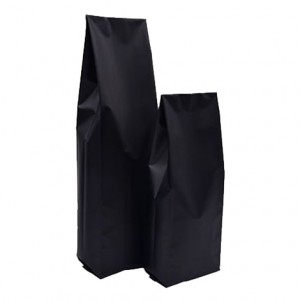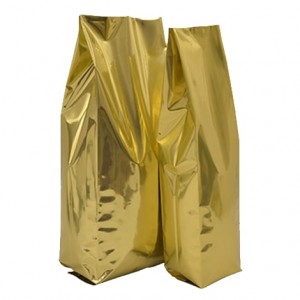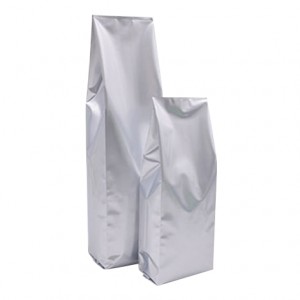In the world of packaging, subtle distinctions can make all the difference in functionality and quality. Today, we’re diving into the specifics of how to distinguish between pure aluminum bags and metallized (or “dual”) bags. Let's explore these fascinating packaging materials and discover what sets them apart!
Definition of Aluminum-Plated and Pure Aluminum Bags
Pure aluminum bags are made from thin sheets of pure metal aluminum, with thicknesses as low as 0.0065mm. Despite their thinness, when combined with one or more layers of plastic, these bags offer enhanced barrier properties, sealing, aroma preservation, and shielding capabilities, making them ideal for protecting sensitive products.
On the other hand, aluminum-plated bags consist of a base material, typically plastic, coated with a thin layer of aluminum. This aluminum layer is applied through a process called vacuum deposition, which gives the bag a metallic appearance while maintaining the flexibility and lightness of the underlying plastic. Aluminum-plated bags are often chosen for their cost-effectiveness and lightweight properties, while still providing some of the benefits of pure aluminum.
Bright or Dull? The Visual Test
The first step in identifying a pure aluminum bag is through simple visual inspection. Pure aluminum bags have a less reflective surface compared to their metallized counterparts. Metallized bags, especially those with non-matte finishes, will reflect light and even show shadows like a mirror. However, there’s a catch - metallized bags with a matte finish can look very similar to pure aluminum bags. To confirm, shine a bright light through the bag; if it's an aluminum bag, it won’t let light pass through.
Feel the Difference
Next, consider the feel of the material. Pure aluminum bags have a heavier, sturdier texture than metallized bags. Metallized bags, on the other hand, tend to be lighter and more flexible. This tactile test can provide quick insight into which type of bag you're handling.
The Fold Test
Another effective method for distinguishing between the two is by folding the bag. Pure aluminum bags crease easily and retain their folds, while metallized bags will spring back when folded. This simple test can help you determine the type of bag without any specialized tools.
Twist and See
Twisting the bag can also reveal its composition. When twisted, pure aluminum bags tend to crack and break along the twist, whereas metallized bags will remain intact and quickly return to their original shape. This physical test can be done in seconds and requires no special equipment.
Fire It Up
Lastly, a fire test can conclusively identify a pure aluminum bag. When exposed to heat, pure aluminum bags will curl up and form a tight ball. Upon burning, they leave behind a residue that resembles ash. In contrast, metallized bags made from plastic film may burn without leaving any residue.
Why Does It Matter?
Understanding these differences is crucial for businesses that rely on high-quality packaging. Pure aluminum bags offer superior barrier properties, which are essential for products requiring maximum protection from moisture, oxygen, and light. For industries such as food, pharmaceuticals, and electronics, choosing the right material can mean the difference between success and failure.
At DINGLI PACK, we specialize in providing premium packaging solutions tailored to meet the unique needs of our clients. Our pure aluminum bags are designed to offer exceptional performance, ensuring your products stay fresh and protected. Whether you need bags for snacks, medical supplies, or electronic components, we have the expertise and experience to deliver.
Conclusion
So, can you tell the difference now? With just a few simple tests, you can confidently choose the right packaging for your products. We believe that every detail counts, and we’re committed to helping you make informed decisions about your packaging needs. Contact us today to learn more about our range of high-quality packaging options.
Post time: Aug-25-2024

